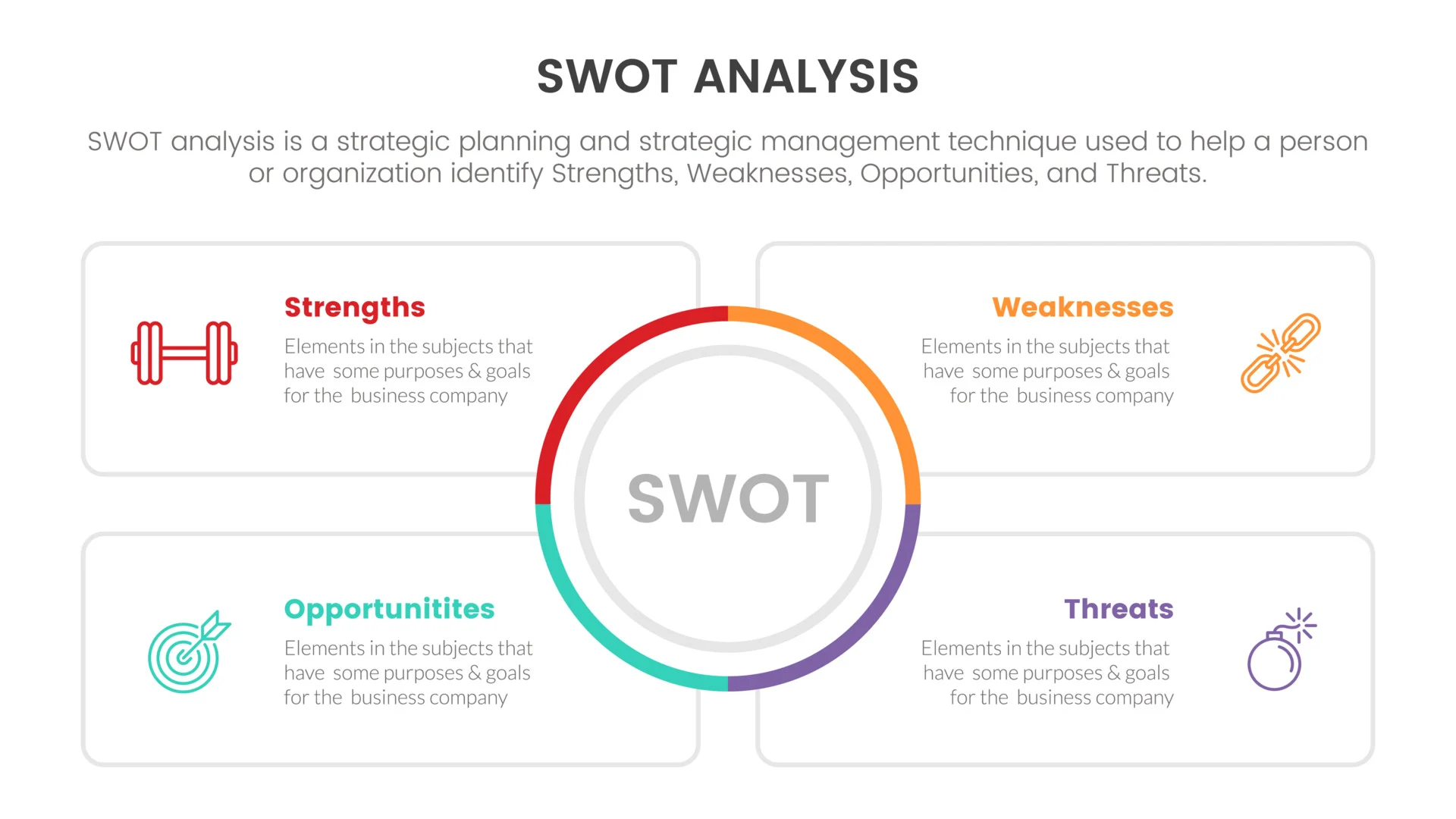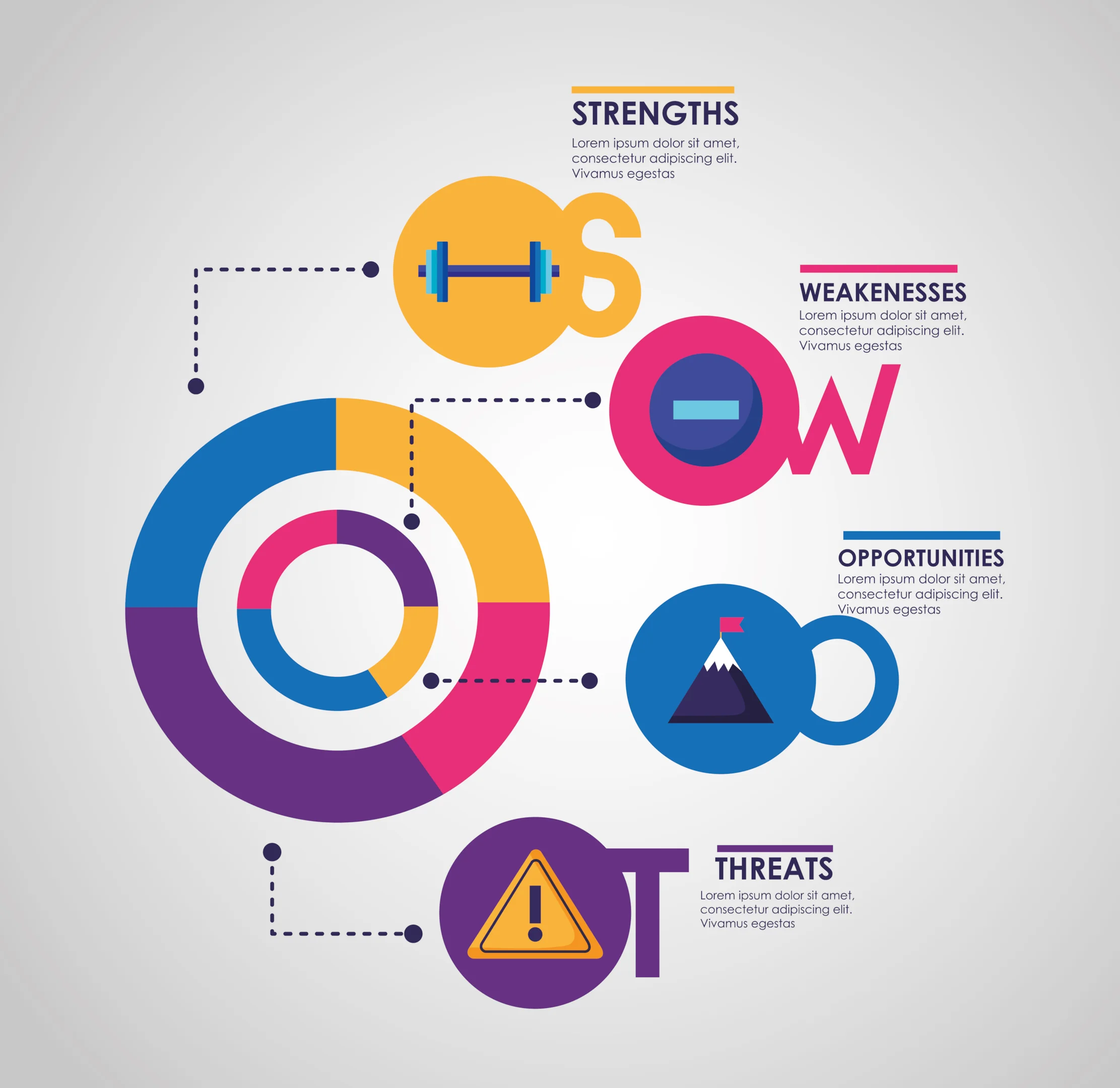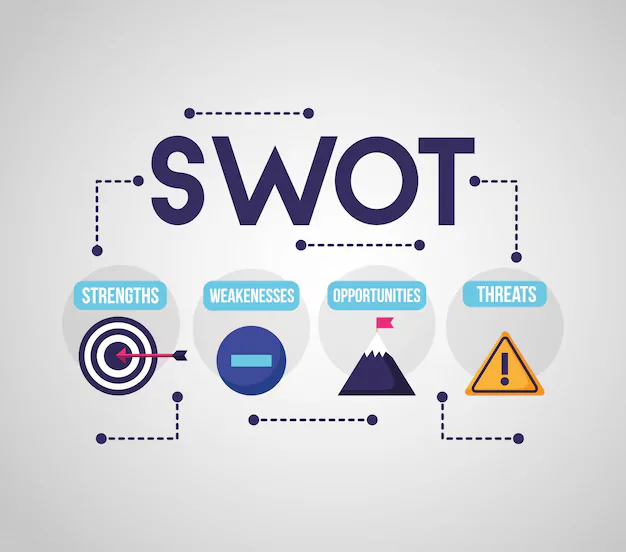How To Use The SWOT Analysis For Small Business
The SWOT analysis is critical for sustaining your small business as business process automation would. Unfortunately, several small business owners think SWOT analysis is for business analysts and economists alone.
However, SWOT analysis is essential for optimizing your small business, especially if you hope to diversify or expand your business structures.
Whether you are just starting or are an experienced entrepreneur, You need the SWOT analysis to harness financial resources, address internal weaknesses, and identify opportunities, ensuring the business's situation is optimized for maximum profitability.
This blog post will enlighten you on all you need to know about how to use the swot analysis for small business. Also, you will learn what it is, and how to apply it to your small business. So here is all you need to know!
What is the SWOT Analysis?

The SWOT analysis process is a systematic business strategy for strategic planning, analyzing the external environment and internal characteristics of your business.
In addition, it helps you make future analyses for more profitability. It works by offering actionable insights to help you see the truth about your business's situation, identifying opportunities, business's weaknesses, and leveraging key areas for growth.
Essentially, it gives you an overall picture of all internal and external factors that influence your business. In this way, you can maximize your strengths and opportunities while minimizing your weaknesses and threats.
Several human resources professionals utilize good SWOT analysis for recruitment, enhancing business's success and aligning with strategic evaluation of marketing efforts and business processes.
Similarly, you can exploit the information from conducting a good SWOT analysis to channel your business strategy towards harnessing strengths and capitalizing on opportunities, which are crucial for maintaining a loyal customer base.
Several businesses employ this planning tool as a business strategy to navigate through external threats like new competitors and government regulations, ensuring they maintain a competitive edge.
When should you conduct a SWOT Analysis?

Ideally, you should conduct a well-executed SWOT analysis at the start of your business plan development or before marketing efforts go public, as part of your future strategies.
After the initial investigation, you should update this essential strategic planning tool for your small business every year, adapting to new markets and external opportunities to enhance your loyal customer base. Perhaps at the start of the year or the end as a form of evaluation.
Before initiating your own SWOT analysis, you need to gather data on consumer trends and new technology, vital for making informed business decisions and financial resources allocation. Essentially, you need to be up to date with the latest happenings in the industry.
For instance, if your competitors have switched to generating online pay stubs for their employees or generating online invoices for customers, you might consider it a factor during your study.
It could negatively impact your business's success, posing a potential threat in an external factor environment that demands actionable strategies.
Also, static analysis of relevant business data, such as financial documents including your 1099 forms, can inform business decisions and assist in a well-executed SWOT analysis of your limited marketing resources.
What does the SWOT Analysis mean as an activity?
Since SWOT stands for specific components in business strategy, you need to understand what each segment means in detail to leverage this useful tool effectively. His approach enables you to conduct an effective and seamless SWOT analysis process, capitalizing on diverse range of internal weaknesses and external opportunities for the growth of your small business.
Here is a brief outline:
-
Strength
-
Weakness
-
Opportunity
-
Threat
Strength
Your business strength refers to all internal factors that highlight the best part of your business. Also, it talks about the positive things about your business and its potential to continue thriving. Essentially, your business strengths are those elements that put your business ahead of the competition or your competitive advantage. Additionally, it is that which makes your business stand out. Your business strength can be tangible or intangible.
Examples of business strengths include but are not limited to:
-
Employee strength
-
Talented workers
-
Automation and high-quality machinery
-
Customer service
-
Quality business service
-
Unique or original products
-
Effective branding and advertising
-
Lower prices, etc.
Weakness
Your business weaknesses are all limiting factors that keep it below your competitors. They are also internal factors affecting your business productivity. Knowing your business weakness will give you a blueprint to fix things. Also, your business weakness could be tangible or intangible.
Here are some examples of business weaknesses:
-
Minimal profits
-
High production cost
-
Poor quality control
-
Manual business processes
-
Inefficient workers
-
Poor marketing, etc.
Opportunity
Opportunities refer to the external factors that could benefit your business, help you stand out, and remain ahead of the competition. Generally, business opportunities depend on the market or the industry. Essentially it would help if you were on the lookout for options you can utilize for your small business to grow.
An excellent way to spot good business opportunities is to look at or follow the events outside your company. Business trends also provide excellent sources of options. Opportunities are either permanent or temporary.
Here are good outlets for business opportunities:
-
Digitalization
-
Online business opportunities
-
Social media presence
-
Market trends
Threats
Threats are equally external factors that can stifle your business growth. Sometimes, they are permanent; other times, they are temporary. Threats are not always within your control. However, the earlier you spot them, the better you can take steps to mitigate them. A flexible business management strategy is vital to manage your threats and convert them to opportunities.
Here are a few examples of business threats:
-
Natural disaster
-
Fierce competitors
-
Market decline
How to apply SWOT Analysis for your small business?

It is one thing to know about the SWOT analysis. But, it is another thing to understand how to apply it to your small business. So here is a way to use it.
Set up a template for your investigation
A typical SWOT framework is a four-quadrant design, critical for a SWOT analysis, which includes the four business components like internal strengths, market share, and supply chain that you need to analyze separately. So, you operate this template by carefully listing out all aspects of your business. In this way, you can critically expose your business processes to objective scrutiny and solution. Alternatively, you can download a standard template online and work with it.
Get your workers involved.
It is crucial not to overlook your workers when conducting a SWOT analysis, as they can provide insights into new technologies that could negatively affect your marketing strategy or supply chain disruptions. The reason is that your employees can be very resourceful during such meetings. Get your workers, especially key members of your team and those managing repeat purchases, involved to leverage their insights on potential threats and loyal customers.
They can highlight the company's strengths, weaknesses, opportunities, and threats that will shock you. Also, remember that employees form a functional system of the company's sustainability. They operate the machines, relate with clients or customers, and are in touch with periodic trends in the industry. Therefore, you can reduce the meeting to a small set of people like your marketing team or the entire staff.
Utilize the results from your analysis
The primary goal of conducting a SWOT analysis for your small business is to apply it, enhancing your risk management strategy and addressing internal strengths to meet the needs of your target audience. Essentially, your SWOT analysis helps you fine-tune your business operations and plans. However, because the factors affecting SWOT analysis are dynamic, you should regularly conduct the investigation—perhaps annually.
Benefits of SWOT Analysis
Here is how this analysis benefits your small business:
-
Encourages business objectivity and focus
-
It makes the company prepared for eventualities
-
Highlights business strong points
Final Thought
Even though you can conduct the SWOT analysis for your business independently. But, you can equally get a professional to handle it. Several HR professionals are handy for helping businesses with their SWOT analysis.

